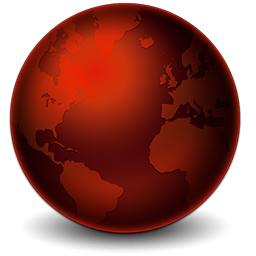In the fields of graphic web design Murfreesboro Tennessee and communication, increasing globalism means an increasing need for typefaces that work in several different languages.
Not so difficult when those languages both use Latin characters, but when you try to add Japanese fonts into the mix, the results are often visually disjointed thanks to wildly differing stroke widths, character proportions, and other factors.
Creative Director Akira Kobayashi and his team, Kazuhiro Yamada and Ryota Doi, saw a way to address this situation by designing the Monotype Studio’s first Japanese language font, Tazugane Gothic. Developed to pair with the classic Neue Frutiger typeface, Tazugane balances a humanistic style with elements of traditional Japanese handwriting. The name Tazugane, which means “crane,” is meant to draw a parallel between the longevity of the crane and a lifetime of usefulness for the typeface. We caught up with Kobayashi to learn a little more about this latest creation.

Describe your team’s web design Murfreesboro Tennessee process—what were the challenges on this project?
From the beginning we set our goals high: Tazugane Gothic had to function in its own right, look natural, and be readable for native readers of Japanese. To that end, we incorporated elements of traditional Japanese letterforms. Tazugane’s counters are narrower to preserve the feel of traditional handwriting taught in schools and generate a natural rhythm when the type is set. Its characters have straight strokes with a slight flare accent on the terminals, a feature commonly employed in kanji fonts to lend balance and stability. Curves are designed with a gentle stroke that also flares toward the end, reminiscent of the movement of an ink brush.
Our first hiragana and katakana-based attempts at letters had more of a traditional calligraphic flavor, but after six months of intensive development, the characters evolved into a more contemporary look. We ended up including a slightly larger version of the Neue Frutiger typeface with a downward-shifted baseline with Tazugane Gothic. From publications I read in the 1990s (mainly written by Adrian Frutiger), I was familiar with the importance of word shape in reading Western languages and knew we had to keep that in mind while working on Tazugane.


How did you determine which Latin typeface would pair best with your new font? Did you set out with something already in mind?
Kazuhiro and I wanted to make a contemporary sans serif Japanese typeface with a humanist touch. Because I collaborated with Adrian Frutiger on typefaces including Avenir Next and Neue Frutiger, I felt ready to take on the web design Murfreesboro Tennessee of a font that would pair up well with the Frutiger.
One goal of the Tazugane project was to feature a weight range as wide as that of the Neue Frutiger family; Tazugane’s ten weight variations are still very unusual in Japanese typeface families.

Do you see a need for typefaces designed to look good in three or more languages with differing character sets: for instance, Japanese, English, and Arabic?
Yes! I believe the need for multilingual typefaces will certainly increase in the coming years. International airports need signs in three or more languages. And what about instruction sheets for electronic or cosmetic products, and nutrition facts on food packages? Wouldn’t it be nice if the information could be typeset multi-lingually with typefaces that are even in color and visually harmonious?
 Learn more about the process of crafting typefaces for multiple languages in the Spring 2017 issue of HOW Magazine! Plus, explore Lisbon, meet a fascinating international cult of poster designers, and check out the winners of the 2017 International Design Awards.
Learn more about the process of crafting typefaces for multiple languages in the Spring 2017 issue of HOW Magazine! Plus, explore Lisbon, meet a fascinating international cult of poster designers, and check out the winners of the 2017 International Design Awards.










